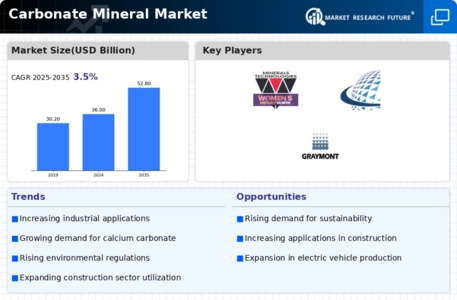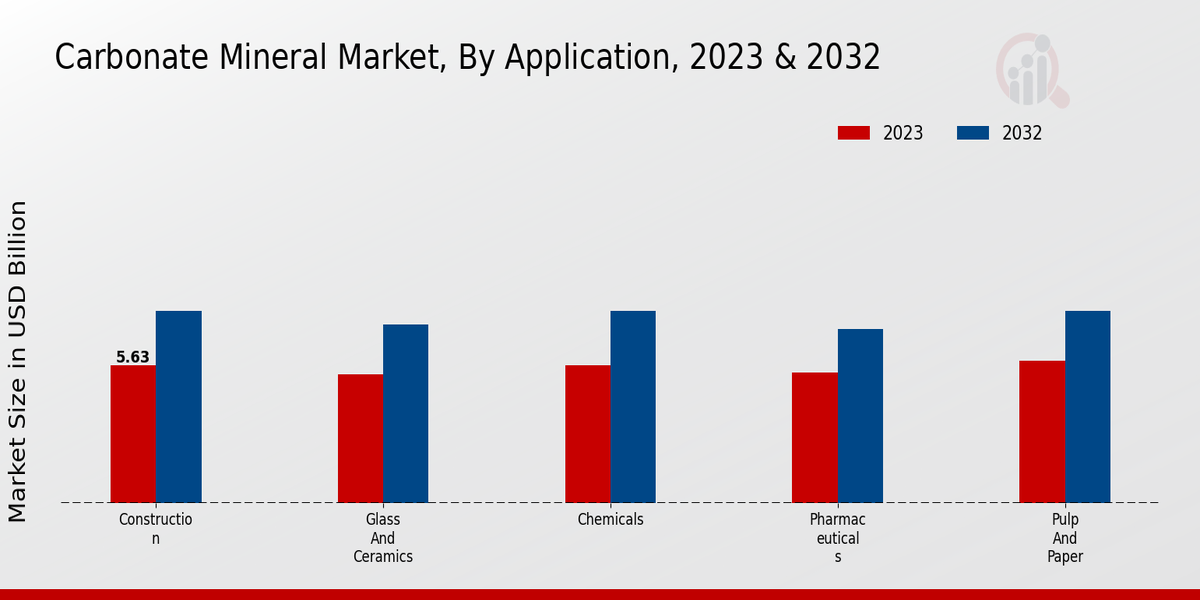Market Trends and Charts
Market Growth Projections
The Global Carbonate Mineral Market Industry is poised for steady growth, with projections indicating a compound annual growth rate (CAGR) of 3.54% from 2025 to 2035. This growth is driven by various factors, including increased demand in construction, agriculture, and industrial applications. As the market evolves, it is expected to expand from 36.0 USD Billion in 2024 to 52.8 USD Billion by 2035. This upward trajectory suggests a robust market environment, where stakeholders can explore new opportunities and innovations. The anticipated growth reflects the essential role carbonate minerals play in various sectors, reinforcing their importance in the global economy.
Increasing Demand in Construction
The Global Carbonate Mineral Market Industry experiences a surge in demand driven by the construction sector. Carbonate minerals, such as limestone and dolomite, are essential for producing cement and concrete, which are foundational materials in construction. As urbanization accelerates globally, the need for infrastructure development intensifies. In 2024, the market is projected to reach 36.0 USD Billion, reflecting the construction industry's robust growth. This trend is expected to continue, with the market potentially reaching 52.8 USD Billion by 2035, indicating a strong correlation between construction activities and carbonate mineral consumption.
Growing Applications in Agriculture
The Global Carbonate Mineral Market Industry benefits from the growing applications of carbonate minerals in agriculture. Calcium carbonate, for example, is widely used as a soil conditioner and fertilizer, enhancing soil quality and crop yield. As the global population continues to rise, the demand for food production increases, thereby driving the need for effective agricultural practices. The use of carbonate minerals in agriculture not only improves soil health but also contributes to sustainable farming methods. This trend is likely to bolster the market, as farmers increasingly recognize the benefits of incorporating carbonate minerals into their agricultural practices.
Technological Advancements in Mining
Technological advancements in mining operations significantly impact the Global Carbonate Mineral Market Industry. Innovations in extraction and processing techniques enhance efficiency and reduce costs, making carbonate minerals more accessible. For instance, the adoption of automated machinery and advanced geological mapping tools allows for more precise mining operations. These improvements not only increase production rates but also ensure higher quality standards. As a result, the market may experience growth as industries capitalize on these advancements to meet rising demand. The integration of technology in mining operations could potentially lead to a more sustainable and profitable carbonate mineral sector.
Environmental Regulations and Sustainability
The Global Carbonate Mineral Market Industry is influenced by increasing environmental regulations that promote sustainable practices. Governments worldwide are implementing stricter guidelines to minimize carbon emissions and promote eco-friendly materials. Carbonate minerals are often favored due to their natural abundance and lower environmental impact compared to synthetic alternatives. This shift towards sustainability may enhance the market's growth, as industries seek compliant materials. The emphasis on sustainable construction practices is likely to drive demand for carbonate minerals, aligning with global efforts to achieve carbon neutrality by 2050.





